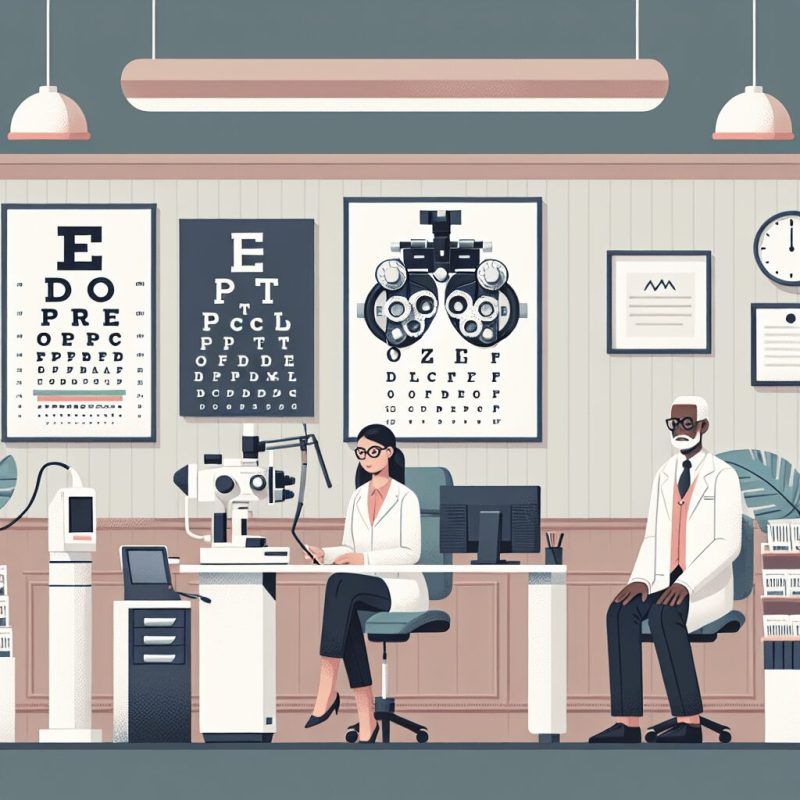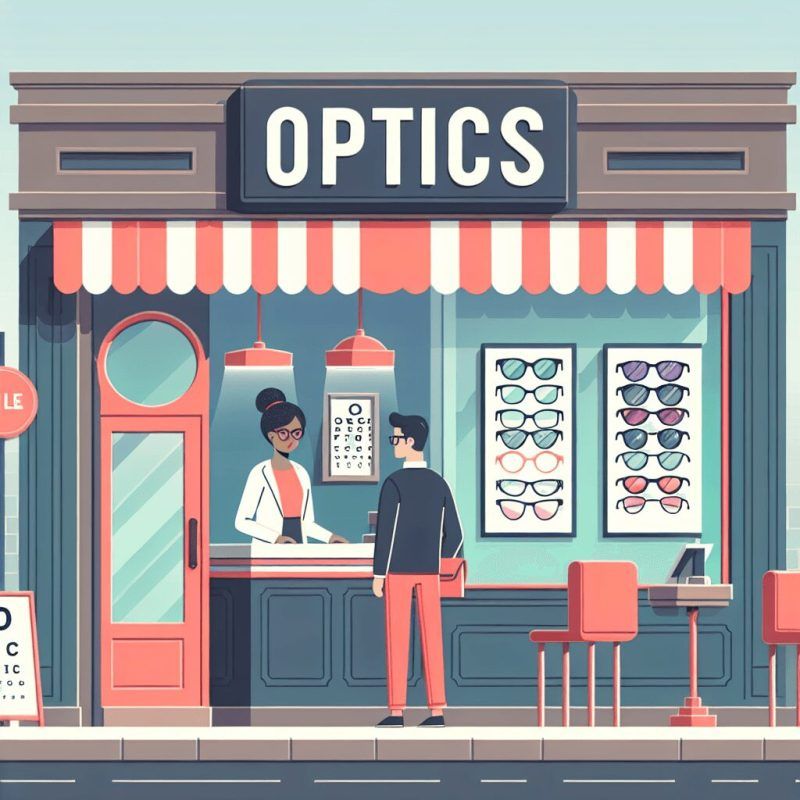Doctor's Corner
Understanding the Outcomes of Glaucoma Treatment
Living with the uncertainty of gradually losing your vision can be tough, especially for those with glaucoma. The treatment options may seem overwhelming, but it’s important to understand the possible outcomes. A recent study looked into what patients expect and prefer. It found that many fear going blind, worry about the burden of treatment, and want to stay independent. By paying attention to patients’ experiences and needs, we can understand how managing glaucoma affects their quality of life better.
Understanding Glaucoma Treatment Outcomes
Importance of Monitoring Glaucoma Treatment Outcomes
Regular monitoring of glaucoma treatment outcomes is important. It helps maintain the treatment’s effectiveness and stops disease progression.
Measuring visual fields, eye pressure (IOP), and patient reports are essential for optometrists. They can see how well the treatment is working and how it affects the patient’s vision and life quality.
Watching IOP levels after surgery can show if the procedure is reducing eye pressure successfully. This helps control the disease.
Without proper monitoring, the risk of blindness or vision loss goes up. Monitoring also catches any problems early, making sure the treatment is safe and works well.
In rural areas or places with less eye care access, monitoring glaucoma treatment is vital. It stops advanced glaucoma and keeps patients’ eyes healthy.
Factors Affecting Glaucoma Treatment Outcomes
Patient adherence to treatment regimens significantly affects glaucoma treatment outcomes. It is important for both medical management and surgical procedures like trabeculectomy. Consistent follow-through with prescribed medications or post-operative care plays a key role in controlling intraocular pressure and disease progression.
In cases of advanced glaucoma, treatment effectiveness becomes more challenging due to pronounced visual field loss and disease severity. Balancing preservation of visual function with managing potential adverse events is crucial. Comorbidities such as ocular hypertension or other eye conditions can complicate the management plan and impact the overall quality of life for patients.
Qualitative research and patient-reported outcome measures help optometrists understand these factors. This understanding allows them to tailor their approach to individual preferences and optimize health-related quality of life in glaucoma patients.
Comparing Glaucoma Surgery Options
Trabeculectomy vs. Glaucoma Implant Surgeries
Trabeculectomy and glaucoma implant surgeries have different outcomes in treating glaucoma.
Trabeculectomy lowers eye pressure by creating a filtering procedure.
Glaucoma implants involve inserting a drainage device to regulate eye pressure.
Factors like disease severity and patient age help decide the best surgery.
Advanced glaucoma cases might benefit more from glaucoma implants for better pressure control.
Younger patients with milder disease may choose trabeculectomy for its less invasive nature and potential to protect vision.
The safety and effectiveness of these surgeries are evaluated through patient feedback and quality-of-life assessments.
It’s crucial to personalize surgical decisions based on individual preferences.
Conventional Surgery vs. Minimally Invasive Glaucoma Surgery (MIGS)
When comparing conventional glaucoma surgery to minimally invasive glaucoma surgery (MIGS), there are key differences in outcomes. These include:
-
Safety profile : MIGS procedures offer a lower risk of complications compared to conventional surgeries like trabeculectomy or glaucoma implants.
-
Speed of recovery : MIGS typically result in faster recovery times.
-
Reduction in intraocular pressure achieved : While conventional surgeries may be more successful in lowering IOP, MIGS can also effectively reduce IOP levels.
Factors such as the patient’s disease severity, age, visual function, and treatment history are important in determining the most suitable surgical approach. Conventional surgery may be preferred for advanced glaucoma cases or when rapid IOP reduction is necessary. On the other hand, MIGS procedures are often chosen for mild to moderate glaucoma or for patients looking for a less invasive treatment option.
MIGS Volume and Its Impact on Glaucoma Treatment Outcomes
Minimally Invasive Glaucoma Surgeries volume affects treatment outcomes. Higher MIGS volume relates to better glaucoma management.
MIGS procedures help reduce intraocular pressure in advanced glaucoma, benefitting patients.
Healthcare providers can improve patient care by offering diverse treatment options based on outcome preferences.
Understanding MIGS volume’s impact helps tailor surgical interventions according to disease severity.
This shift towards minimally invasive procedures enhances safety, speeds up recovery, and boosts post-operative quality of life.
As a result, visual function improves, leading to higher satisfaction with glaucoma treatment.
Long-Term Outlook for Glaucoma Patients
Patient Lifetime and Glaucoma Treatment Outcomes
Patient lifetime is important in glaucoma treatment.
Advanced glaucoma can worsen over time, affecting visual function and quality of life.
Factors such as disease progression, treatment history, and the effectiveness of medical or surgical procedures like trabeculectomy or minimally invasive glaucoma surgery can impact treatment outcomes.
Monitoring intraocular pressure, visual field changes, and patient-reported outcomes is crucial for assessing treatment effects.
Optometrists can personalize glaucoma management by considering patient preferences and tailoring treatment accordingly.
This personalized approach can improve quality of life and preserve vision, especially in high-risk populations with limited access to eye care services.
FAQ
What are the potential outcomes of glaucoma treatment?
Potential outcomes of glaucoma treatment include reduced eye pressure, preservation of vision, and prevention of further damage to the optic nerve. Treatments such as eye drops, laser therapy, and surgery can help manage the condition and improve overall eye health.
How long does it typically take to see results from glaucoma treatment?
It can take several weeks to months to see results from glaucoma treatment. For example, eye drops may start to lower eye pressure within a few weeks, while surgical procedures may take longer to show improvement.
What are the common side effects of glaucoma treatment?
Common side effects of glaucoma treatment may include eye irritation, redness, blurred vision, headache, and changes in the color of the iris or skin around the eye. Some medications can also cause systemic side effects like fatigue or digestive issues.
Can glaucoma treatment completely cure the condition?
No, currently, there is no cure for glaucoma. However, treatments such as medicated eye drops, surgery, or laser therapy can help manage the condition and prevent further vision loss.
How often should I follow up with my healthcare provider after starting glaucoma treatment?
It is recommended to follow up with your healthcare provider every 3 to 6 months to monitor your glaucoma treatment progress and make any necessary adjustments. Additional follow-ups may be scheduled if needed for specific cases or concerns.
Uncover the Magic of Crystal-Clear Vision Now! Take Control of Your Eye Health and Schedule Your Comprehensive Eye Exam at Superior Eye Care in The Woodlands or Quality Eye Care in Willowbrook, Texas .
The post Understanding the Outcomes of Glaucoma Treatment first appeared on Optometrist in Woodlands & Willowbrook TX.
Doctor's Corner





